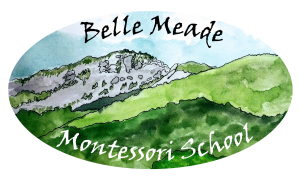Math/Science
Statistics is a branch of mathematics that deals with the systematic collection, analysis, and interpretation of data. Students will study and analyze data from many real world disciplines such as medicine, biology, social science, law, natural resources, climate, engineering, sports, and economics, just to name a few. The class will be introduced to professional level statistical software in order to process medium to very large data sets. Students will be expected to design surveys and experiments in order to demonstrate statistical methods and models. The positive and negative influences of Big Data in modern culture will play an important role during background discussions.
Anatomy is a branch of Biology concerned with the scientific study of the physical structures of organisms. The structures of insects, amphibians, reptiles, and mammals will be explored by way of hands-on laboratories throughout this course. Physiology will investigate the chemical and physical functions found in living organisms and systems.
Students will study the structure of the earth, minerals and their properties, rock formation, methods for geologic dating, earth processes, plate tectonics, weathering, the hydrosphere, the atmosphere, climate, and the solar system. Students learn material and share knowledge through outdoor lab application, indoor lab work, textual exploration, projects, and classroom discussion.
Life Science explores living systems through experience and experimentation, as well expository instruction and reading. This course challenges students to expand their understanding of evolution, basic life processes, cellular organization, heredity, ecology, and human biology.
Students study the fundamentals of physics, chemistry, earth, and space sciences. This course introduces students to the scientific method and allows for exploration while challenging students to master the underlying math and to apply scientific concepts to solve complex problems.
The integration of geometry, algebra, and trigonometry is the goal of pre-calculus. Detailed study of polynomial functions, exponential and logarithmic functions, trigonometric functions, analytic geometry, systems of equations, sequences, and probability constitute the core of the class. Students can be expected to model natural and man-made phenomena using material in the course. Limits of functions and a basic introduction to derivatives are the threads that tie pre-calculus to the full study of calculus.
This course is intended to build upon the concepts developed in geometry and Algebra I. The course covers advanced topics in algebra such as polynomials and their graphs, division of polynomials, composite functions, zeros of polynomial functions, exponential and logarithmic functions, systems of equations, imaginary and complex numbers, and trigonometric functions. The properties of matrices and determinants will be covered also.
Students are encouraged to perform calculations by hand and electronic methods. Topics in this course are important for the SAT and other college entrance exams.
Students learn the basics of algebraic thinking while honing fundamental math skills. Students learn algebraic language and concepts. During the course they expand their ability to independently apply algebraic reasoning using real numbers, exponents, variables, ratios, proportions, equations, and inequalities.
Physics is the study of the properties of matter and energy. The course will cover the topics of classical mechanics, thermodynamics, electricity and magnetism, and modern physics. Laboratory work provides realistic experience in data collection, analysis, and the demonstration of important physics principles. It is suggested that students have a good mastery of Algebra II in order to succeed in the course.
Chemistry is focused on the study of the structure and composition of matter, and the changes that occur to matter during various chemical and physical interactions. The course provides many hands-on experiments and investigations involving laboratory equipment, basic elements, compounds, and mixtures. Students explore atomic structure, the periodic table, chemical equations, stoichiometry, gas laws, acids and bases, phase changes, and oxidation-reduction reactions. The nature of the course necessitates a comfortable understanding of algebra and a willingness to develop an understanding of the scientific method.
This course uses problem-solving techniques to explore living systems. High School Biology includes a variety of hands-on experiments and challenges students to explore basic life processes, cellular organization, mechanisms of inheritance, the dynamic relationship between organisms, and the change in organisms through time. As students explore these concepts they will be challenged to grow in their understanding of the scientific method and they will develop a greater sense of belonging to the community of life.
Geometry is the study of spatial reasoning. Students learn properties of two-dimensional and three-dimensional figures, classical reasoning, geometric construction, and Cartesian geometry. Students learn these concepts and skills in a cognitively rich context of problem solving, critical reading and thinking, and hands-on projects. Advanced studies in geometry can lead to trigonometry, the study of right triangles and their applications.
Algebra is the study of numerical patterns and their abstract representations. Students represent and analyze these patterns using functions, operations, tables, and graphs. Students learn these concepts and skills in a cognitively rich context of problem solving and critical reading and thinking. Advanced algebra concepts involve more complex reasoning and functions, conic sections, trigonometry and modeling.
Middle school mathematics emphasizes problem solving and assists the student in finding mathematical solutions. In addition to problem solving this course reviews and enhances the student’s understanding of basic mathematical concepts. This class looks further into the order of operations, decimals, the metric system, basic geometry, data analysis, factors, proportions, ratio, integers, and algebraic equations.
